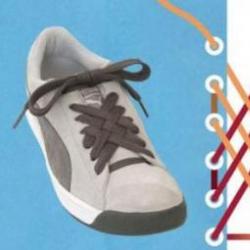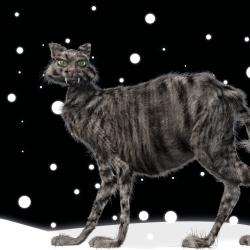Nod for the middle group - a gift from mom. Node on the topic "gift for mom." Material for conducting GCD
1. Clarify and consolidate children’s knowledge about the names of flowers and their structure;
2. To develop the ability to sculpt flower elements;
3. Develop fine motor skills of the fingers, creative imagination;
4. Develop the ability to use different sculpting methods;
5. Cultivate aesthetic taste;
6. Create a desire to give a gift to mom
Equipment and materials: multimedia equipment for showing presentations; modeling boards, plasticine, stacks, napkins.
Move
:
Educator:
The days are fine
Similar to holidays
And in the sky there is a warm sun,
Cheerful and kind.
All the rivers overflow
All the buds are opening,
Winter has gone with the cold,
The snowdrifts became puddles.
Educator: Guys, did you find out what time of year I read you a poem about?
Children: Yes, about spring
Educator: Right, how did you guess?
Children: (explain: rivers flood, buds open in spring)
Educator: Right, what holiday are we looking forward to at the beginning of spring?
Children: March 8, International Women's Day.
Educator: and who will we congratulate?
Children: girls, grandmothers, mothers
Educator: How is it customary to congratulate women?
Children: Giving gifts
Educator: What gifts do women like?
Children: Flowers
Educator: Do your mothers like flowers?
Children: Yes
Educator: What flowers do your mothers like?
(Children's answers)
Educator: Guys, let's give our mothers flowers, would you like?
Children: We want
Educator: But where can we get them?
Children: Buy in store
Educator: Okay, then sit back, we're going to the flower shop.
(presentation included)
Educator: Well, well, choose flowers. What flowers are sold in the 1st row?
Children: Roses
Educator: And in the second?
Children: tulips
Educator: And in the third?
Children: Lilies
(The number of flower rows is at the teacher’s choice; the structure of each flower is discussed: thorns, long stem, wide leaves, etc.)
Educator: Well, you’ve chosen some flowers, let’s buy them, do any of you have money to buy flowers? (problem situation)
Children: No
Educator: I don’t have it either, but what should I do?
Children: You can make flowers with your own hands
Educator: Of course you can, but from what material?
(Children offer suggestions, including making them from plasticine)
Educator: What great fellows you are! So many options for solving the problem were offered. I suggest you use one of the options: mold it from plasticine and invite you to a creative workshop.
The children sit down at the tables and get to work.
During the sculpting process, the teacher asks the children questions (what flower will you sculpt? What are you doing now? What part of the flower will you still make? Who will you give it to, etc.)
at the end of the lesson, children optionally talk about the choice of their flower, briefly describe it, talk about the difficulties of doing the work and in general about their impressions
Vera Trubetskaya
Abstract of the educational activity “Gift for Mom”
Abstract open integrated lesson in the middle group at topic: "Dress for Mom"
Program content:
"Cognitive Development": To give children the concept that a woman - a mother - is a ray of sunshine in the home of every good person, a hard worker, a teacher, a homemaker, a living love and tenderness.
"Artistic and aesthetic development": To develop children’s ability to cut a circle out of a square, lay out ready-made figures on paper, reinforce the techniques of creating a composition and train children in careful gluing, cultivate aesthetic perception, the ability to see and independently choose ways to decorate the work.
"Speech development": Develop dialogical speech, continue to develop the ability to answer questions clearly; activate adjectives in children’s speech (affectionate, kind, cheerful) and nouns (love, caring, attention);
"Social and communicative development": Cultivate love and tender feelings for the mother, obedience to her.
Material:
Colored base in the shape of a dress; ready-made squares; glue; glue brush; stands for brushes; oilcloth; napkin, scissors.
Demo material: finished dress sample
Introductory part.
- Guys, look, guests have come to us, let's say hello to them.
Now everyone come to me.
(The children gathered near the teacher. To attract the attention of the children, a short warm-up is carried out).
Everyone approached each other
They stomped their feet: top, top, top
Hands patted: clap, clap, clap
And now we'll turn around
And let's smile at each other.
Progress of the lesson:
The teacher reads a poem by Ubair Rajai, addressing children:
Who came to me this morning? Mommy!
Who said: “Is it time to get up? Mommy!
Who managed to cook the porridge?
Who poured tea into the cup?
Who braided my hair?
Cleaned everything at home, swept it?
Who is a child who loves laughter?
Who is the best in the world? Mommy!
Who is this poem about? Guys, what are your mothers names? (give first name, patronymic). What beautiful names your mothers have. Is mom the most important word in the world? -Why?
I summarize the children's answers. -What are our mothers like? -Who is a working mother (cooks dinners, does laundry, cleans the apartment, sews, knits, works at work, at the dacha.)
And your mother is a teacher? (teaches his children everything from the first days life: eating, talking, dressing, neatness, cleanliness, reading a lot of books to children, talking, educating, playing).
How does a mother feel about her child? (with love, tenderness, kindness, caring)
There are many poems, songs, and stories about mothers. And now I will read you a short story.
“Alyosha, seeing his mother in the kindergarten locker room in the evening, asked her: “Well, does your leg hurt today?” (Mom had a broken leg). He invites her to sit while he gets dressed, and then takes his clothes from her hands. mouth: “I’ll help you carry it, otherwise it’s hard for you.”. Mom says to him: “You are an attentive, caring son, I am proud of you”. I'm asking a question children:
What kind of boy is Alyosha his mother's son? (caring, attentive.). I summarize the answers children:
I am very pleased, guys, that you have kind, loving hearts. Listen to another story.
“Masha and her mother were walking down the street. Mom stumbled and seriously hurt her leg. Masha pulled her mother across the road to the ice cream stand. Mom says daughter: “There’s no time for ice cream now. You see, every step gives me pain.", and she's in answer: “Just think! Adults don’t get hurt, they know how to endure.”.
What mood, what feelings did the mother experience after her daughter’s words?” -Who would you like to be like? To Alyosha or Masha? Why?
Guys, do you love your mothers? (Yes). Let's choose the most tender, kind words for our mother and put them in our chest. (Children select words, the teacher helps the children with leading questions. Writes the words on a piece of paper in the form of a petal).
When does mom hug, stroke, kiss? Which? (affectionate).
When does mom smile or laugh? Which? (cheerful).
When children are naughty, but mom doesn’t scold? Which? (good).
And if you love your mother, what is she like? (darling).
Well done! That's how many wonderful words we collected in a chest for mom.
In the meantime, we will close it so that our words are not lost and forgotten.
Physical exercise “Mom”.
The teacher reads a poem, the children perform the appropriate movements.
I love my mom
I will always help her:
I wash, rinse,
I shake the water off my hands.
I'll sweep the floor clean
And I’ll chop firewood for her.
Mom needs to rest,
Mom wants to sleep.
I'm walking on tiptoes
And never, and never
I won't say a word.
What's your mood now? What do you want to do for your mothers now? ( give flowers, kiss, do present)
We gift for mom
We won't buy.
Let's do it ourselves
With my own hands.
You can embroider her a scarf,
You can grow a flower
You can draw a house
Blue river.
And also kiss,
Dear mother!
Ready to please your beloved mommy a gift? Our mothers love to dress up, and so do we. we'll give you a dress, but our dress is unusual, it will be made of paper.
(showing the template). But ours is not very beautiful, we need to decorate it. What can you decorate with? (children's answers). And we will decorate our dresses with circles. Look how
can it be done? We will need squares, we will cut off their corners. I take scissors and cut off one corner, another, another, and another. It turns out to be a circle. Look how many circles there are - these are polka dots for our dress. Now I’ll put the finished peas on the dress. When everything is laid out, you can start gluing. (showing a finished sample) Tell us how we will stick the circles? (I turn the circle with the colored side down onto the oilcloth, take a brush, dip it in glue and spread it evenly on the circle, I take the smeared peas and circle with two fingers and apply it to the dress, gently press it with a napkin and lightly wipe off the excess glue).
So, what are you and I planning to do? (Dress for mom). What will we make it from? (From paper). What do we need for this? (children's answer).How we will do it (In order - cut out, lay out, paste). Result? (Nice dress). You can go choose the dress you will decorate. Now let’s get up and go to the tables.
Now let's prepare our fingers for work:
Visiting the big toe
They came straight to the house
Index and middle
Nameless and last
The little finger itself
Knocked on the threshold
Fingers together friends
They cannot live without each other.
Now your fingers are warmed up and ready to work, let's get started!
Let's start cutting out the polka dots for the dress. We cut off the corners of the squares, one by one. Now let's start arranging the polka dots
all over the dress: in the middle, along the edges to make it beautiful.
Happened? Then stick it on.
(Children work independently. I remind you that I help those who cannot cope on their own).
Let's look at how the dresses turned out (Beautiful dresses, mothers will like them.)
Now let's lay them out on the table, let the glue dry thoroughly, and then we'll give it to mothers.
Summarizing:
Guys, tell me, what did we do in class today?
How did we decorate our dresses?
Did you like our lesson?
Publications on the topic:
Lesson summary “Gift for my beloved mother!” Age of children 3-4 years Form of organization - group Objectives: 1. Expand children's understanding of women's holiday and traditions of congratulations.
Goals: improve the ability to work with paper, use scissors correctly. - create three-dimensional crafts from paper. -Develop imagination.
 To develop fine motor skills, you must not only confidently hold a pencil, but also skillfully use scissors. To develop this skill.
To develop fine motor skills, you must not only confidently hold a pencil, but also skillfully use scissors. To develop this skill.
In Russia, Mother's Day is celebrated annually on November 27th. All pupils in our kindergarten prepare for this event.
Abstract of the educational activity "Plant as a gift to mother" for children of senior preschool age.
Propagation of indoor plants.
Sidorova Zoya Grigorievna, teacher of MBDOU combined type kindergarten No. 8 “Aistenok”, MichurinskPurpose of work: This summary is intended for preschool teachers, primary school teachers, and additional education teachers.
Dear friends, I bring to your attention a summary of educational activities on cognitive development (familiarization with indoor plants) for children of senior preschool age. ECD is aimed at developing the cognitive interest of older preschoolers in indoor plants.
Target: Formation of the ability to grow cuttings of indoor plants.
Tasks:
1. Introduce cuttings - one of the methods of propagating indoor plants.
2. Develop the ability to properly plant cuttings in the ground and care for them.
3. Cultivate a caring attitude towards indoor plants, attention and love for loved ones.
.Dictionary enrichment: introduce nouns: cuttings, verbs: cuttings, loosening; adjectives: tender, moist.
Materials for the lesson: oilcloth, aprons, disposable cups for each child, a stick, a watering can with water, a box or bucket of soil, scoops, jars with cuttings in water for each child, the teacher has several indoor plants from which cuttings are taken.
Progress of the lesson:
1.Introductory conversation with children about indoor plants.
What plants do you know in this corner of nature? (children name several plants)
Why are they called indoor? (These are plants that in our area do not grow in open ground all year round, because they do not tolerate cold winters).
2. Surprise moment:
A knock is heard on the door, the postman comes in and brings a beautiful box.
The teacher explains that in order to find out what is in the box and open it, you need to guess the riddle:
Mystery.
round leaves,
Lush flowers
Even very good -
That's what the kids decided.
On the window this early
Bloomed... ( geranium).
Fig.1
Educator: Children, who wants to tell poems about geraniums?
Unpretentious flower
Given to me by my mother -
Both bright and beautiful.
Many have it on the window.
It blooms wonderfully all summer
And pleases with foliage.
It grows everywhere, everywhere,
He's so handsome!
3. The teacher's story.
Educator: Each flower is beautiful in its own way. Many poems have been written about geraniums. And all the poets say that geranium is a dearly loved flower, a symbol of warmth and comfort, a symbol of a home where you are always welcome. It’s not for nothing that the name “grandmother’s flower” has been assigned to geraniums. At one time he was considered the personification of something outdated. And now “grandmother’s” means dear, familiar, homely...
A flower was born far, far away in South Africa. It was brought to us by seafarers. Everyone liked it because it blooms so beautifully.
Let's take a closer look at geranium (pelargonium)
This plant is light-loving, it has a straight stem,
Fig.2

Round, light green leaves on long stems. Brownish, brownish circles seem to be drawn on the leaves. That's why it was called "zonal pelargonium"
Rice. 3

Flowers grow in a “bouquet” - an inflorescence.
Fig 4

4. D/game “From which plant were the cuttings taken?”(kalonchoe, geranium, golden mustache).
Rice. 5

Rice. 6

Fig.7

Target: learn to identify a houseplant by external signs.
Progress of the game: The teacher offers several cuttings and indoor plants for examination. Children name the plants from which cuttings are taken.
5.Planting the cutting.
Educator: Guys, who wants to plant a cutting of pelargonium and then give such a beautiful plant to their mother? (children speak out)
How to plant cuttings?(teacher demonstration)
make a hole with a stick, stick it into the ground and twist
Rice. 8

place the cutting in a hole in the ground,
Fig.9

press the soil near the cuttings, but not too close to the stem,
Fig.10

Water the planted cuttings.
Rice. eleven

6. P/game: “Hit the plant by leaf.”
Target: the ability to find a houseplant by external signs
Progress of the game: The teacher shows a leaf of the plant, the children find the plant and approach it.
7. Independent work activity.
Planting cuttings by children. Children count the number of leaves and remember. When a new leaf appears, the cutting has taken root and is growing. Water the plant.
Fig.12

8. Work in observation diaries: sketch the planted cuttings in a table to further monitor the development of the plant.
9. Lesson summary: Talk with children about caring for plants.
Remind them that the children will bring these plants as a gift to their mother.
To mom
V. Shugraeva
I'll plant a sprout in a pot,
I'll put it on the window.
Hurry, sprout,
Open the flower -
I really need him.
The winds will rush outside the window
With a snowy winter,
But it will be higher
Every day
Grow my flower.
When according to the calendar
The time of spring will come,
Eighth of March
I'll give it to you
I give my mother my flower!
Thank you for your attention, dear colleagues. I wish you success!
Soltevskaya Irina Anatolevna
Teacher, MBDOU kindergarten No. 66 of combined type, Kiselevsk
Soltevskaya I.A. Gift for mom: notes on GCD in the younger group. Artistic creativity. Paper construction // Sovushka. 2017. N2(8)..07.2019).
Order No. 27748
Topic: "Gift for Mom"
Types of children's activities: gaming, communicative, cognitive-research, musical-artistic, productive.
Program content: Arouse interest in creating a gift for mom in collaboration with the teacher. Continue to teach children the elements of paper plastic arts: tearing colored paper into pieces, skills in working with glue, the ability to correctly apply glue to a green strip, and use a napkin. Cultivate interest in applique, the ability to place stripes on the entire surface of the album sheet. Develop a sense of form and composition. Cultivate a sense of caring for mom.
Planned results: Can answer questions, be active when performing tasks, dance movements to the tune of “Let’s all squat.” (music by I. Arsenyeva, lyrics by I. Chernitskaya).
Musical accompaniment: “We will all squat” ((music by I. Arsenyeva, lyrics by I. Chernitskaya)
Materials for the lesson: sheets of white paper for the background with pasted flowers, green paper, glue, napkins, green plasticine.
Preliminary work:
1. Conversation about the holiday.
2. Examination of plot pictures.
3. Selection of musical accompaniment.
4.Learning the dance for mothers “Let’s all squat.”
5. Learning the poem by A. Barto “Conversation with Mom.”
1.Organizational section.
Guys, let's remember what holiday it is today. That's right, the holiday of our mothers.
2. Main part. Teacher's story about a gift for mom.
Educator:
I send greetings to my dear mother
There is no better mother in the world
I'll ask my mom to dance
and I’ll give her a scarlet flower.
Guys, I really like our gifts for mom (pre-glued flowers cut out by the teacher from colored paper). But our flower is lonely, let us stick on some beautiful leaves. What material do you think is best to make the leaves from? That's right, you can take green plasticine or a piece of green paper and tear it into strips.
3. Review and discussion of execution technique.
Educator: each of you guys chose your own technique. When making sheets of plasticine, the teacher demonstrates the modeling method:
Pinch off a piece of plasticine and roll it out like a sausage (with straight movements of your palms)
We apply it to the leaf, next to the flower and press it onto the paper.
When making leaves from green paper, the teacher demonstrates the technique of torn pieces:
Tear off a strip of green paper
Apply glue to the back (white) side, apply it to the background and apply it with a napkin.
Physical education lesson "Stompers".
One two three four. five we stomp our feet.
One, two, three, four, five, clap our hands.
One, two, three, four, five we will gather.
Once. two three four. We'll sit down to study at five.
4. Making leaflets.
The teacher monitors the technique and helps children who have difficulty completing the task.
5. Reflection.
Children's work is laid out on the table.
Educator: What wonderful gifts you got. Admire them and give them to your mother.
Invite moms to a joint dance “We will all squat.”
6.After class.
Congratulations to mothers on the holiday. Reading of A. Barto’s poem “Conversation with Mom”:
The son calls - Agu, agu! -
Like, stay with me!
And in response: - I can’t,
I'll wash the dishes!
But again: -Yeah. ahu!-
Heard with renewed vigor.
And in response: “Bug, I’m running,”
Don't be angry, my dear.













 Back forward
Back forward
Attention! Slide previews are for informational purposes only and may not represent all the features of the presentation. If you are interested in this work, please download the full version.
Integration of educational areas:
Communication,
Cognition,
Socialization,
Health,
Artistic creativity,
Target: Through productive activities (designing a greeting card for mothers on March 8), consolidate the material covered.
Tasks:
* Improve sound analysis of words;
* Continue to form an idea of the proposal.
* Strengthen the ability to divide words into syllables;
* Replenish your vocabulary, practice selecting words that are close in meaning, words of the same root;
* Develop logical thinking, attention, phonemic hearing, perseverance;
* Clarify the spelling of the number eight, continue to teach how to depict numbers in an unconventional way using plasticine;
* Foster independence, self-criticism, and the ability to evaluate one’s knowledge and skills;
* Develop children's ability to negotiate by working in pairs and in groups;
* Create a health-improving microclimate and physical activity of the child during ECD by including physical education, visual and breathing exercises.
Material for conducting GCD
Progress of the GCD
Whose holiday is this? (discussion by children)
How are you going to congratulate your mothers and grandmothers? (presumably one of the children wants to congratulate with a postcard or drawing)
I propose to support the idea of (child's name) to congratulate his mother with a greeting card. How can it be done? (children's suggestions)
And he will tell us how to design a postcard flower- seven-colored (on the board and on the screen). Slide number 2.
By tearing off the petals, we learn the sequence of its manufacture. The petals will need to be torn off in a certain order - the colors of the rainbow. Let's remember them. Slide number 3.
Children name the color spectrum:
- Red,
- Orange
- Yellow
- Green
- Blue
- Blue
- Violet
But I know that the petals from our seven-flowered flower will not just disappear. Each petal will return to each of you after completing the task, and you will gradually stick them on a piece of paper with your photo. But don’t just stick it on, but evaluate the result you get. Look, if you can easily and simply complete the task, then stick on a flat petal like this; if you do not complete the task completely or find it difficult, then stick on a petal with a notch. Slide number 4. The torn petal from the seven-flowered flower and the glued one must match in color.
(Each child has a sheet of paper with a round photo glued in the middle).
So, let's tear it off red petal. Slide number 5.
Task 1. Draw the number 8 with plasticine.
Fold the card blank in half - short side to short side. On the title (main) page you see a number. What is this number? (8)
Trace it with plasticine. How can I do that? (roll out the sticks with straight movements and press them along the contour of the number)
Think about how easy it was for you to complete this task and glue the first petal to your score sheet.
What color did you glue on the petal?
Orange petal. Slide number 6.
Task 2. Write the word March.
What month is Mother's Day? (in March) Under the number 8 there are 5 flowers in which the word is encrypted - Martha. Each flower sound, and you need to paint them with a color that matches the sounds of this word.
Let's remember what we know about sounds.
- What are they? (vowels and consonants). Name the vowels.
- What are the consonant sounds? (soft and hard).
- Name it.
How do we designate vowel sounds, soft consonants, hard consonants? Let's play game “Living Word”.
(Five children come out, the teacher names their sounds in the word, they take a signal corresponding to the color of the sound)
M – blue, hard consonant
A – red, vowel
T – blue, hard consonant
M – blue, hard consonant
Now paint over the flowers.
After completing the task, children evaluate their results using an orange petal.
ELECTRONIC EYE GYMNASTICS. Slide No. 7
“Daisies”
Yellow petal. Slide No. 8
Task 3. Place flowers in vases.
Open the postcard. On the 2nd page you see three vases, but there are no flowers in them, but on March 8 it is customary to give flowers to all women. Here we are let's give our mothers flowers, they lie in front of you. They need to be “put” in vases. In the first vase you need to “put” a flower whose name has 1 syllable, in the second - 2 syllables, and in the third - 3 syllables (poppy, daffodil, mimosa)
Children's assessment of the completed task. Only smooth yellow petals lie on the plates. And if someone has difficulty completing a task, what can be done with the petal? (cut the notch yourself.)
Green petal. Slide No. 9
Task 4. Write a congratulation to your mother.
Wishes are written in greeting cards.
Now you will come up with your own proposals based on the diagrams. Slide No. 10
And in the postcard I suggest you write schematically: “Mommy, I love you.”
- How many words are there in this sentence? (4)
- How will we draw the first stripe? Why?
- What other words are written with a capital letter?
Now each of you come up with a wish for your mother and “write” it schematically, and at home you will “read” it to your mother. (Ask 2-3 children what they “wrote”)
PHYSICAL MINUTE
Slide No. 11
Blue petal. Slide No. 12
Task 5. “Name the professions” using pictures (work in pairs)
For every pair of children there is a picture.
Male - female profession.
Tennis player-tennis player, singer-singer, clown-clown, violinist-violinist, tailor-dressmaker, teacher-teacher, etc.)
What are the names of words that are similar in pronunciation? (Related, same root.)
Blue petal. Slide No. 13
Task 6. “Holiday menu” based on pictures (work by companies)
Based on the first sounds of the word, determine the dish from the holiday menu that the children and dad will prepare for mom (fruit drink, cake, salad, banana, etc.)
Evaluate the completed task.
Before the next task we need to do
BREATHING GYMNASTICS.
Slide No. 14
On one exhalation, repeat after me:
- My mom
- My mom is like a flower
- My mother is like a flower, like a dewdrop
- My mother is like a flower, like a petal with dewdrops.
Purple petal. Slide No. 15
Task 7. “Give mom a kind word” for a given sound.
Children take turns naming words based on a given sound.
Example words:
A - angel
B - brilliant, incomparable
B – attentive, delightful
G – graceful
D – kind, dear, precious
E is the only one
F – desired, my life
Z – caring, my star
And - amazing, skillful
K – beautiful, sweetie, beauty
L – beloved, swallow, little ray, sweetheart
M – sweet, young
N – unusual, unique, irresistible, tender
O – charming, seductive, charming, educated, sociable, mischievous
Evaluation of the completed task
How do you think our postcard turned out? Are all pages complete?
There is one empty page left, and I suggest you draw a picture on it for mom this evening.
There are no petals left on our seven-flowered flower, but you have your own flowers. Show them to me.
Why aren't all your petals straight? During which task did you experience difficulties?
I see that all your petals are even. What does it mean? (all tasks were easy)
I'm sure that next time all the petals on your flowers will be even, you just need to try a little.
But for every mother, you are always and always dear.
Take your leaves with flowers and let's perform for mom






